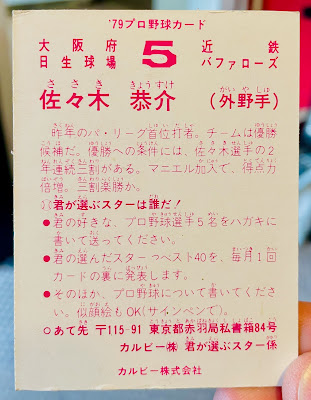I post #BucketCards from time-to-time on my @number5typecard Bluesky account as distinctive or meaningful poses from a wide range of sets. This article gathers five cards of Babe Ruth along similar lines, reflecting his unparalleled career as hurler and slugger from 1914-35. The Bambino first appeared on tobacco-esque sets as a svelte International League pitcher and hung around long enough to still appear on cards for Boston's 1935 Braves, a legendarily terrible club.
Let's start at the beginning!
1914 Baltimore News (as Orioles pitcher)
Baltimore's International League team found an unpolished jewel in Ruth, not far removed from a rough younger life. First scouted for his pitching arm, this sweater-clad card appears in red or blue. Its value is sky high, given how hard it proves to find anything from this set, let alone the Bambino.
Baltimore hosted its own Federal League team, the Terrapins, in 1914, and competed for fans with the existing International League team, an earlier iteration of the "Orioles." Ruth spent just two months there before the Boston Red Sox acquired him in July.
1920-21 Universal Toy & Novelty Company strip cards
These two cards reflect the Babe's transformation from ace pitcher to slugging outfielder, as Universal's card artist adapted a Boston warmup photo into two cards (1920 left, 1921 right). Artistic work on that pastel card turned his normal lefty follow-through into a righty hitting pose, saving the cost of licensing a new photo.
The second card added soft pinstripes to reflect his Yankees affiliation, closer to what fans expected of Ruth by 1921, even when hitting from the "wrong side."
1925-31 W590 "King of the Bat" strip card
Surely this is how we'd all want to be known! "I am royalty and my lineage has mastered...The Bat."
These W590 cards date to the 1925-31 window, based on players and teams shown. It was common for strip card printers of that era to reprint the same images, year after year, only updating spots on each strip when players changed teams or retired. Note how this strip proves current for a single season, 1925, thanks to its bolded players.
- Ike Caveney, SS Cincinnati: 1925 was Ike's last in the majors.
- George Burns, OF Philadelphia: 1925 was as George's only year in Philly and last year in the majors.
While they could print the same photos again and again, W590 contains enough team variations to show someone paid attention to those (literal) lineups, even if to add "former" for existing cards.
Like many strip card collectors, I look forward to future research working out which company made W590 cards and how often they changed layouts. Now, back to the Babe!
1931 W626 Sun Pictures Photo Kits
If Ruth looked like this in real life, I'd call him "The Jaundiced Jolter."
These "sun pictures" tell their own creation story, as simple light exposure brought out (muted yellow) images on the self-developing panels, complete with block letter player name. 12 baseball players appear in this multi-subject set, all stars at their time. This Ruth's a superior batting pose to many others printed under his name.
1935 Schutter-Johnson "Babe Ruth's Grip"
This hand-drawn Ruth card features the art of former MLB pitcher Al Demaree, drawing hands.
Playing advice for enthustiastic kids are a recurring theme on cards and this entire set mixes cartoons with tips, all sketched by Demaree and penned by uncredited ghostwriters.
I love how Babe's quoted as saying, "you will have command of the bat instead of the bat having command of you." Sage words indeed from King of the Bat.
Those five Babe Ruth #BucketCards make for an interesting counterpoint to his far more familiar poses and creations. Let me know what cards would be on your own list!


















































